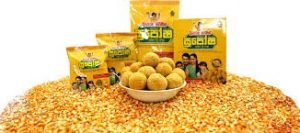Production of rice, coconut, fish, and rubber declines, while tea production increases marginally
Sri Lanka’s agricultural sector is facing a significant downturn, with key crops such as paddy, rubber, and coconut experiencing sharp declines in production. This comes as global agricultural commodities, including coffee and cocoa, also grapple with supply chain disruptions caused by extreme weather. But the tea production little bit rose due to favourable weather conditions.
The combined impact is driving up the prices in Sri Lanka, with food inflation becoming a growing concern for both consumers and policymakers.
“Paddy output for the 2024/2025 Maha season, as per the area planted by the end of March 2025, is projected at 2.62 million metric tons, marking a 3.8% decrease compared to the prior Maha season,” stated the Agriculture Sector Data Bulletin from the central bank for May 2025.
Fish production decreased by 0.1 percent year-on-year in April 2025, as a setback in inland fishing activities (30.5 percent decline year-on-year) was offset by improvements in marine fishing activities (9.7 percent increase), according to the bulletin.
Domestic coconut production in April declined by 6.2 percent year-on-year, but “the upward trend observed since February 2025 indicates a gradual recovery in output” CBSL said.
Domestic rubber production saw a year-on-year decline in April 2025, according to highly provisional data from the Rubber Development Department.
“Global market prices for natural rubber dropped in April 2025 as tapping activities continued to grow, while demand remained weak due to the uncertainty in the market stemming from trade tariffs.”
Sri Lanka’s tea production, the country’s largest agricultural export, saw growth in both December 2024 (9.6 percent) and January 2025 (14.6 percent). However, the production sharply fell by 22 percent in February 2025, totalling 15.59 million kilogrammes. This decline brought the cumulative production for the first two months of 2025, down by 0.07 million kilogrammes. At the same time, the tea auction prices have also been on the decline.
At the same time, the report said that tea output rose during the past years. Tea production in the country rose by 23.0% (year-on-year) in April 2025, primarily due to beneficial weather conditions.






